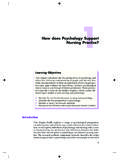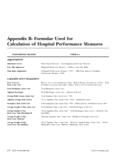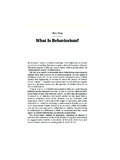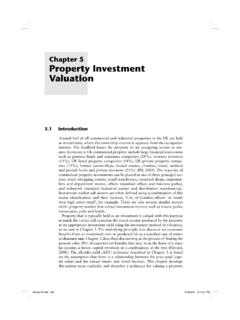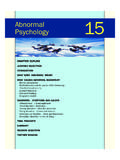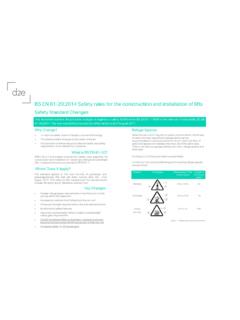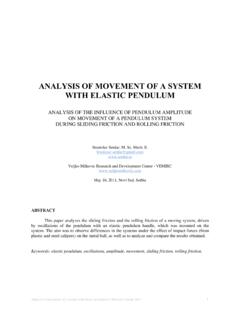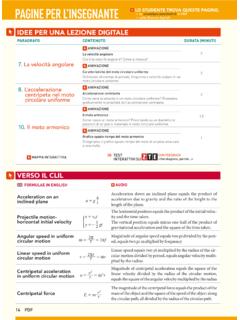Transcription of Adolescence and Adulthood 10 - Wiley-Blackwell
1 CHAPTER OUTLINELEARNING OBJECTIVESINTRODUCTIONADOLESCENCEP hysical developmentCognitive developmentSocial and emotional developmentEARLY ADULTHOODP hysical developmentCognitive developmentSocial and emotional developmentMIDDLE ADULTHOODP hysical developmentCognitive developmentSocial and emotional developmentLATE ADULTHOODP hysical developmentCognitive developmentSocial and emotional developmentFINAL THOUGHTSSUMMARYREVISION QUESTIONSFURTHER READINGA dolescence and 1/2/05 3:36 pm Page 202 Learning ObjectivesBy the end of this chapter you should appreciate that:nthe journey from Adolescence through Adulthood involves considerable individual variation;npsychological development involves physical, sensory, cognitive, social and emotional processes, and theinteractions among them;nalthough Adolescence is a time of new discoveries and attainments, it is by no means the end of development;nthere is some evidence of broad patterns of adult development (perhaps even stages), yet there is also evidenceof diversity;nsome abilities diminish with age, while others is a lifelong affair, which does notstop when we reach Adulthood .
2 Try this thoughtexperiment. Whatever your current age, imagineyourself ten years from now. Will your life haveprogressed? Will you have attained any goals?What state will your body be in, and how will youfeel about it? Where will you be living? Will yourcognitive and occupational skills have improvedand broadened, or started to slow down? Do youanticipate changes in your financial status? Willyou have gained/retained/replaced a partner?How will you adjust to new responsibilities (atwork, at home)? Will your leisure activities differ?Will you have had children/seen existing childrengrow up and leave home? Would you expect otherpeople to regard and treat you differently from theways they do now? What changes in the largerworld (technological, political, economic) mightaffect you in a decade s time?
3 If ten years ahead is an awesome prospect,imagine yourself 20, 30 or more years from nowand repeat the you find this an easy or difficult task? Isyour life course planned and your intention to fol-low it unshakeable, or do you see it as open tothe decisions of others, or governed by purechance? Do you look forward to change (and ageing), or does the prospect unnerve you?It soon becomes clear when we contemplateour own futures that change is inevitable. But towhat extent is development in Adulthood due tointrinsic, fundamental changes in the organism,to accumulating experiences in complex environ-ments, or to social and community pressures toadapt? Is change continuous and gradual, or is itmarked by major transitions? You will notice thatthese are similar issues to those questions weconsidered in chapter this chapter, we follow developments beyondchildhood, beginning with Adolescence and thenmoving into the phases of Adulthood early, mid-dle and there are many aspects to develop-ment during Adolescence and Adulthood , andwide individual variation in circumstances andachievements, the core issues, psychologicallyspeaking, continue to revolve around the themescovered in chapter 9.
4 So, once again, we will fol-low each phase of development from physical,cognitive and social 1/2/05 3:36 pm Page 203204204 Adolescence and AdulthoodThe effects of variationVariations in the pace of development lead to complex some respects, those who mature early tend to have an advant-age in that they are seen and treated as more adult-like. Some young people, especially males, gain from this, developinggreater popularity and confidence that can endure into adult life( Jones & Bayley, 1950). In contrast, late maturers may experiencesome insecurities as they compare themselves with their peerswho are ahead of them in the prized achievement of growing up(Alsaker, 1992).But there can be drawbacks to early maturation, too. Forexample, some early maturing boys are drawn into activities (liketruancy or delinquency) that get them into trouble with parents,teachers and other authorities (Ge et al.)
5 , 2001). Some early matur-ing girls report higher levels of psychosomatic distress duringtheir teens. This is perhaps because their earlier involvement inactivities such as dating and other people s expectations of themto behave as adults lead to pressures they are not yet equipped tohandle (Ge, Conger & Elder, 1996; Graber et al., 1997).COGNITIVE DEVELOPMENTLess immediately visible is an intellectual growth spurt duringthis period (Andrich & Styles, 1994). The young person is becom-ing capable of thinking about the world, and dealing with thechallenges it presents in new and more powerful period of formal operationsIn Piaget s view, the cognitive advances of middle childhood (theconcrete operational period) are limited because they can only beapplied to relatively accessible problems, tasks concernedIt is difficult to decide exactly when Adolescence begins or ends,as both boundaries are subject to individual variation.
6 Is a personan adolescent when he or she reaches a particular age say, theteens? Some people at this age are already relatively mature sexu-ally, whereas others are still pre-pubertal. Intellectual maturitycan vary just as when is Adolescence complete at the end of the teens, at21, or later? Some people have adult responsibilities perhaps ajob and family by their late teens, while others can be foundskateboarding around university campuses, free of commitmentsand still quite unsure of where they are heading in life, into theirmid these reasons, psychologists working on Adolescence tendto define the period broadly, as a time of transition between child-hood and Adulthood , acknowledging that the timing and pace ofdevelopment is subject to considerable DEVELOPMENTT hrough most of childhood, people grow at a fairly steady pace about 5 10 cm and 2 3 kg per annum.
7 But with the beginnings of Adolescence , most individuals undergo another radical change,often called a growth spurt. In girls, this typically occurs at aroundage 10 to 13; in boys, it occurs between 12 and 15. Growth is quiterapid compared to earlier in the lifespan a girl may add around9 kg in a year, and boys around 11 kg (Tanner, 1962). Rememberthe tadpole in chapter 9? The transformations of puberty as thedeveloping body commences the changes that allow it in turn tocontribute to the reproductive process are almost as sexual characteristicsA particularly important physical change during puberty is theemergence of secondary sexual characteristics. In girls, this meansan increase in subcutaneous fat and rounding of the body, thebeginnings of breasts and, towards the end of the spurt, pubic hairand the menarche (the first period).
8 In boys, the penis, testes andscrotum begin to enlarge, pubic hair appears, the voice begins to deepen, and muscles grow and strengthen. At around 13 to 14, most boys experience ejaculations or nocturnal emissions(wet dreams). Underlying all of these external changes, there areimportant hormonal developments, due to the increased produc-tion of oestrogen (in girls) and androgen (in boys). Young peopleare now heading towards their mature size and form, but thepace of development varies markedly across developmental changes are important from a psycho-logical perspective, because they affect the young person s senseof self and relations with others (Brooks-Gunn & Paikoff, 1992;Durkin, 1995). Unlike the tadpole, human adolescents are verymuch consciously aware of the changes they are undergoing.
9 The emergence of the secondary sexual characteristics promptsthem to think of themselves as young adults, and to change theirappearance and activities puberty, secondary sexual characteristics, such as facialhair in males, begin to 1/2/05 3:36 pm Page 204 Adolescence205205with the physical here andnow , or easily imagined scen-arios (see chapter 9). Duringadolescence, many individualsprogress beyond this limi-tation, and are able to dealwith more abstract cognitivetasks. Piaget calls this (thefinal stage in his model) theperiod of formal again, Piaget and his collaborators studied this phase ofdevelopment in great detail (Inhelder & Piaget, 1958). They set anumber of tasks for children and adolescents, designed to illumi-nate changes in their reasoning processes.
10 In one task, partici-pants were presented with a set of pendulums, with objects ofdifferent weights suspended from strings of different lengths(figure ). The task was to determine what influences the speedwith which the pendulum swings: is it the weight of the object,the length of the string, the height from which the object isdropped, the speed with which it is pushed, or some combinationof factors?Children still in the concrete operational stage set about thetask rather haphazardly. They tried guessing and random combi-nations of actions but were unable to isolate the effects of a singlefactor. Adolescents (aged 14 15) who had reached formal opera-tions worked in a much more systematic fashion. They tested theeffects of varying a factor ( length of string) while holding theother factors constant ( using the same weight for each trial),keeping track of the different manipulations and possibilities.
